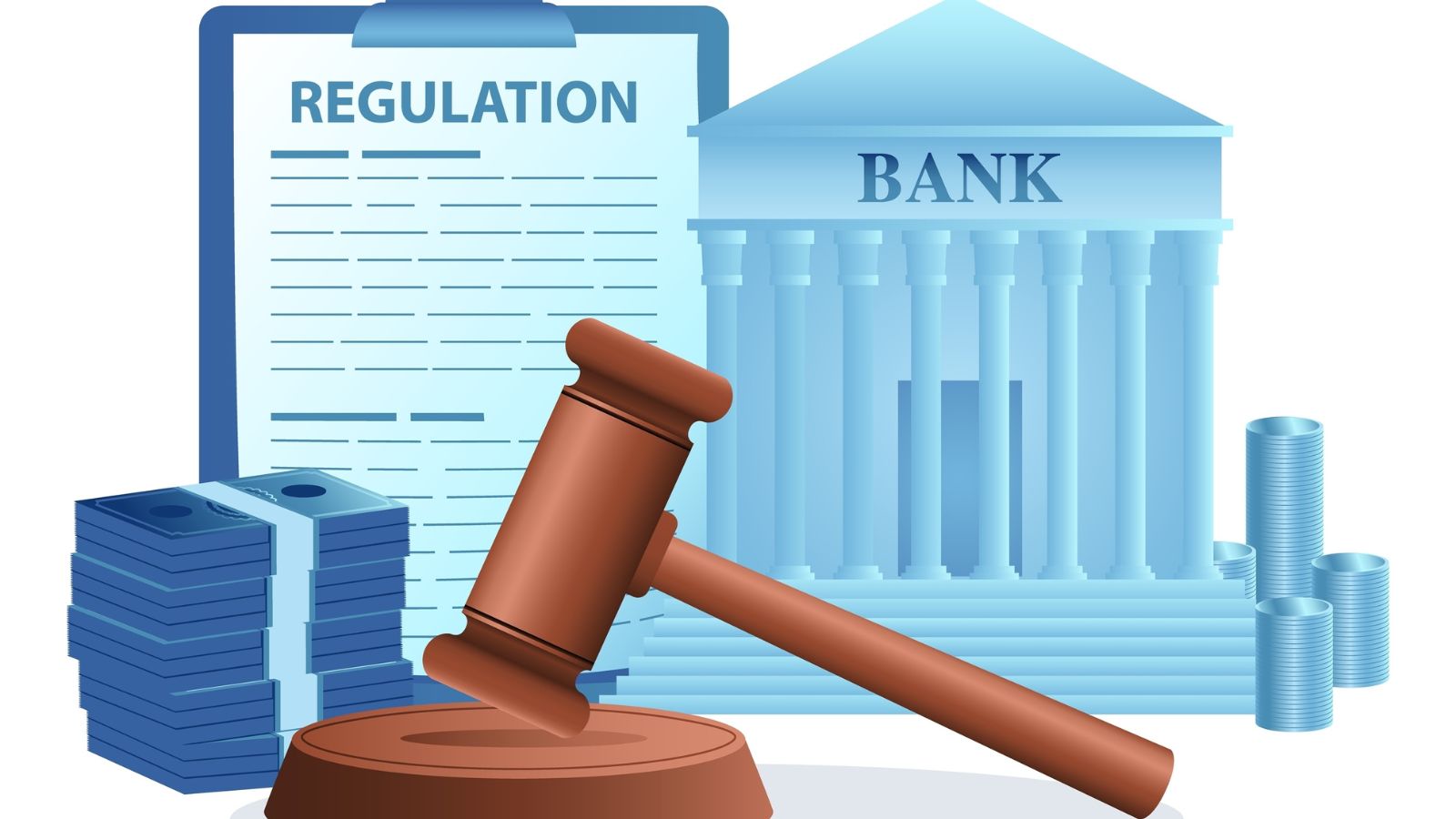As Canada enters 2025, financial challenges are becoming more apparent for individuals and families across the country. Rising costs in essential services, housing, and everyday living expenses have put many under financial strain. Interest rate hikes, economic shifts, and market uncertainties are making it harder for Canadians to maintain financial stability. Recognizing these warning signs early can help individuals take proactive steps to protect their finances. From mounting debt to increasing taxes, here are 25 financial warning signs every Canadian should be aware of in 2025.
Rising Grocery Prices

Food prices have been steadily rising due to supply chain disruptions, extreme weather events, and global inflation. Many Canadians have noticed that everyday essentials, such as dairy, meat, and fresh produce, are becoming increasingly expensive. While some grocery chains offer loyalty programs and discounts, they may not be enough to offset the higher costs. Consumers are turning to bulk buying, discount retailers, and price-matching apps to save money on food. Even dining out has become more expensive, with restaurants passing on their increased costs to customers. Adopting meal planning and reducing food waste can help households manage their grocery budgets more effectively.
Higher Mortgage and Rent Payments

With interest rates at record highs, mortgage holders are seeing their monthly payments increase significantly. Many homeowners who locked in low interest rates years ago are now facing financial strain as their renewal periods approach. Meanwhile, renters are experiencing price hikes due to high demand and limited affordable housing options. Some cities have seen a surge in rent prices, making it difficult for low- and middle-income earners to find suitable housing. Affordability programs exist within the government, but they may not provide relief to all affected individuals. Those struggling with payments should explore refinancing options, downsizing, or seeking rental assistance programs.
Increased Credit Card Debt

Canadians are increasingly relying on credit cards to cover their daily expenses, resulting in growing household debt. With interest rates on credit cards averaging around 20%, carrying a balance can quickly spiral into financial trouble. Many consumers are struggling to make minimum payments, which prolongs debt repayment and increases overall costs. Economic uncertainty and job instability have compelled some individuals to rely on credit for their essential needs. Paying off high-interest debt should be a priority to avoid long-term financial strain. Budgeting carefully and utilizing low-interest options, such as balance transfers or consolidation loans, can help alleviate debt burdens.
Utility Bills Continuing to Rise

Electricity, heating, and water bills have increased due to fluctuations in energy prices and government policies. The cost of maintaining a home is rising, with carbon taxes and infrastructure improvements contributing to higher utility rates. Harsh winters or extreme weather conditions can lead to unexpected spikes in heating and cooling costs. Some provinces offer energy rebates or efficiency programs, but they may not fully offset rising expenses. Households can reduce their energy consumption by upgrading to energy-efficient appliances, utilizing smart thermostats, and sealing air drafts. Being mindful of energy usage can help lower monthly utility costs in the long run.
Stagnant Wage Growth vs. Inflation

While inflation continues to push up the cost of living, wages in many industries have not kept pace. Workers are finding that their paychecks don’t stretch as far as they used to, making it harder to cover daily expenses. Even professionals in high-paying fields are experiencing financial strain as inflation erodes their purchasing power. Many Canadians are seeking additional sources of income, such as freelancing, side businesses, or gig work. Negotiating salary increases or pursuing upskilling opportunities may provide some financial relief. Keeping track of industry trends and advocating for fair wages can help workers stay ahead.
Rising Interest Rates on Loans and Credit

The Bank of Canada’s interest rate policies have led to higher borrowing costs, affecting mortgages, car loans, and personal lines of credit. Those with variable-rate loans have seen their monthly payments increase substantially, thereby reducing their disposable income. Higher interest rates also impact business loans, making it more difficult for small business owners to expand or manage expenses. Credit card users face growing balances as interest charges accumulate, leading to long-term financial difficulties. Canadians should assess their debt repayment strategies, prioritize paying off high-interest loans, and explore fixed-rate options where possible. Keeping an eye on central bank decisions can help individuals plan their finances more effectively.
Rising Interest Rates on Loans and Credit

The Bank of Canada’s interest rate hikes have significantly increased borrowing costs for Canadians. Those with variable-rate mortgages or personal loans have seen their monthly payments rise sharply. High interest rates also make it more expensive for businesses to access credit, leading to slower growth and job uncertainty. Consumers relying on credit cards are facing mounting interest charges, making it increasingly difficult to pay off their balances. Refinancing, debt consolidation, and fixed-rate loans can help mitigate the impact of rising rates. Staying informed about central bank decisions can help individuals effectively plan their financial strategies.
Declining Home Affordability

The housing market remains a major challenge, with home prices outpacing wage growth in many regions. First-time buyers are struggling to save for down payments as housing costs soar. Mortgage qualification rules have tightened, making it harder to secure home loans, especially for younger buyers. Even those who own homes are facing higher property taxes and maintenance costs. Some Canadians are opting to rent longer or relocate to more affordable provinces. Exploring government housing programs and alternative homeownership options can help ease financial burdens.
Increased Cost of Living in Urban Centers

Living in major Canadian cities like Toronto, Vancouver, and Montreal has become increasingly expensive. Rising costs for rent, groceries, transportation, and entertainment are putting pressure on household budgets. Many workers are finding that their salaries don’t keep up with inflation, forcing them to cut back on discretionary spending. Some people are moving to smaller cities or suburban areas to reduce expenses. Government affordability programs may offer some relief, but they often don’t fully address the rising cost of urban living. Budgeting carefully and considering remote work opportunities can help manage these challenges.
Growth in Personal Debt Levels

Canadians are carrying more debt than ever, with high credit card balances, personal loans, and lines of credit. As living expenses increase, many are turning to borrowing to make ends meet. Rising interest rates mean that carrying debt is becoming more costly, leading to financial strain. Missed payments can damage credit scores and lead to long-term financial difficulties. Creating a realistic repayment plan and avoiding unnecessary debt can help individuals regain control of their finances. Seeking financial advice or credit counseling may also provide useful strategies for managing debt.
Higher Transportation Costs

The price of owning and maintaining a vehicle has surged due to rising gas prices, insurance rates, and maintenance costs. Car loan interest rates have increased, making financing a vehicle more expensive. Public transportation fares have also risen in many cities, adding to commuting expenses. Some Canadians are opting for carpooling, biking, or working remotely to cut transportation costs. The transition to electric vehicles (EVs) is gaining traction, but high upfront costs remain a barrier. Exploring fuel-efficient transportation options can help manage rising expenses.
Shrinking Retirement Savings

Many Canadians are finding it harder to save for retirement due to high living costs and stagnant wages. Market volatility and inflation are eroding the value of existing retirement savings. Employer pension plans are becoming less common, leaving individuals responsible for their own retirement planning. Some retirees are being forced to return to work or downsize their homes to make ends meet. Working with a financial advisor can ensure better retirement planning and investment decisions.
Rising Healthcare Expenses

While Canada has universal healthcare, many medical expenses, such as dental care, prescription drugs, and vision care, are not fully covered. Private health insurance premiums are increasing, adding financial strain to households. Aging Canadians face higher out-of-pocket costs for long-term care and specialized treatments. Some employers are reducing healthcare benefits, leaving workers with fewer coverage options. Planning ahead with a health savings fund can help manage unexpected medical costs. Exploring provincial healthcare assistance programs may provide additional financial relief.
Increase in Property Taxes

Homeowners in many regions are facing rising property taxes as municipalities adjust to higher costs of services. These increases add to the financial burden of homeownership, especially for retirees on fixed incomes. Property tax hikes often accompany rising home values, making it harder for some to afford to stay in their homes. Some provinces offer property tax relief for seniors or low-income homeowners, but these programs have eligibility restrictions. Appealing property tax assessments may help reduce costs in some cases. Budgeting for higher tax bills can prevent financial strain in the future.
Stricter Lending Regulations

Banks and lenders have tightened borrowing requirements, making it harder to secure loans or credit. Mortgage stress tests have become more difficult to pass, preventing some homebuyers from qualifying. Businesses and startups are also struggling to access funding due to risk-averse lending policies. Those with lower credit scores or high debt loads may find it challenging to obtain financing. Canadians should work on improving their credit scores and reducing existing debt to increase loan eligibility. Seeking alternative financing options, such as credit unions or peer-to-peer lending, may also help.
Job Market Uncertainty

Economic shifts and automation are leading to job losses in certain industries, creating employment instability. Many companies are freezing hiring, reducing hours, or implementing layoffs to cut costs. Workers in retail, manufacturing, and tech sectors are particularly vulnerable to job market fluctuations. Upskilling and diversifying income sources can help improve job security. Those facing job loss should explore government employment programs and retraining opportunities. Maintaining an emergency fund can provide financial stability during periods of unemployment.
Decline in Small Business Stability

Small businesses are struggling due to rising operating costs, labor shortages, and economic uncertainty. Many business owners are facing higher taxes, rent, and supply chain disruptions, impacting profitability. Consumers are cutting back on discretionary spending, reducing revenue for local businesses. Some small businesses are turning to e-commerce and digital solutions to stay competitive. Government grants and financial assistance programs exist, but they may not be enough to sustain struggling businesses. Supporting local businesses can help strengthen the economy and preserve jobs.
Rising Costs of Everyday Essentials

The prices of groceries, household items, and essential goods have been steadily increasing. Inflation continues to drive up the cost of basic necessities, making it harder for families to manage their budgets. Many Canadians are forced to shop at discount stores, buy in bulk, or switch to generic brands to save money. Supply chain disruptions and climate-related issues have further contributed to the rising cost of food and other essentials. Government support programs like grocery rebates provide some relief, but they may not be enough for everyone. Planning meals and cutting unnecessary purchases can help manage these increasing costs.
Unstable Canadian Dollar

The fluctuation of the Canadian dollar impacts everything from import prices to travel expenses. A weaker dollar means that imported goods, including electronics and food, become more expensive for consumers. Canadians traveling abroad or shopping from international retailers may find their purchasing power reduced. Businesses that rely on international trade face increased costs, which can lead to higher prices for domestic consumers. Watching exchange rate trends and adjusting spending habits can help mitigate financial risks. Investing in domestic products and services can also support the local economy and reduce dependency on foreign currency values.
Growing Dependence on BNPL) Services

The rise of “Buy Now, Pay Later” (BNPL) programs has made it easier for Canadians to purchase items without immediate payment. However, many consumers are accumulating debt without realizing the long-term impact of multiple installment plans. Missed payments can lead to high fees and negatively affect credit scores. Some BNPL providers have less transparent terms, making it difficult to track outstanding balances. Financial experts warn that excessive reliance on BNPL options can create unsustainable spending habits. Setting a strict budget and prioritizing necessary purchases over impulse spending can prevent financial pitfalls.
Higher Education Costs and Student Debt Challenges

Post-secondary education costs are rising, putting more pressure on students and recent graduates. Tuition fees, housing costs, and student loan interest rates make it difficult for young Canadians to manage their finances. Graduates are entering the workforce with significant debt, which can delay major life milestones like buying a home. Government student loan repayment programs provide some relief, but interest charges continue to accumulate over time. Parents saving for their children’s education also face financial strain as costs rise. Seeking scholarships, bursaries, and alternative education paths can help reduce the long-term burden of student debt.
Rising Cost of Insurance Premiums

Auto, home, and health insurance premiums are increasing due to inflation and higher claim costs. Severe weather events and natural disasters have led to higher home insurance rates in vulnerable areas. Auto insurance costs vary by province, but many Canadians are facing higher rates due to regulatory changes and accident claims. Health insurance plans are also becoming more expensive, especially for those who require additional coverage beyond government healthcare. Comparing insurance providers and looking for discounts can help manage rising premiums. Some Canadians are opting for higher deductibles to lower their monthly payments, but this comes with added financial risks.
Growing Number of Bankruptcies and Insolvencies

The number of personal and business bankruptcies is rising as Canadians struggle with debt repayment. Higher interest rates, job losses, and increased living expenses have pushed many individuals into financial distress. Businesses, especially small enterprises, are facing insolvency due to declining revenues and rising operational costs. Declaring bankruptcy can have long-term consequences, including damaged credit scores and limited financial options. Seeking financial counseling and exploring debt consolidation plans can provide alternatives to bankruptcy. Taking proactive steps to manage debt before it becomes unmanageable is crucial for financial stability.
Declining Consumer Confidence and Spending Power

Consumer confidence has weakened as economic uncertainty continues to grow. Many Canadians are cutting back on discretionary spending, which affects businesses and overall economic growth. Retailers, restaurants, and service providers are experiencing lower sales, leading to layoffs and closures. Higher living costs mean that consumers are prioritizing essentials over luxury or non-essential purchases. Economic recovery depends on maintaining a balance between responsible spending and supporting local businesses. Budgeting wisely while supporting Canadian industries can help strengthen the economy in challenging times.
Delayed Homeownership and Housing Market Instability

High property prices and mortgage rate hikes have made homeownership unattainable for many young Canadians. Even those who qualify for a mortgage are hesitant to buy due to fears of a market downturn. Rent prices are also increasing, leaving fewer affordable housing options for those who can’t buy. Some homeowners are struggling with rising mortgage payments, leading to financial stress or potential foreclosures. Government programs aim to support first-time buyers, but competition and limited inventory remain significant barriers. Exploring shared ownership, rent-to-own options, or alternative housing markets can help Canadians achieve their homeownership goals.
Increased Financial Scams and Cybersecurity Threats

Online fraud and financial scams have become more sophisticated, targeting unsuspecting Canadians. Scammers are using fake investment schemes, phishing emails, and fraudulent calls to steal personal information and money. Many people, especially seniors, fall victim to these scams, losing significant amounts of their savings. Cybersecurity breaches at financial institutions and retailers have also exposed customers to identity theft. Staying vigilant, using strong online security measures, and verifying sources before making financial transactions can help prevent losses. Reporting suspicious activities to authorities protects others from falling into similar traps.
Conclusion

As 2025 approaches, Canadians must stay informed and proactive in managing their financial health. Rising costs, debt concerns, and economic uncertainty require careful budgeting and planning. By recognizing these warning signs early, individuals can make smarter financial decisions and safeguard their future. While the economic landscape may be challenging, smart money management and informed choices can help Canadians confidently navigate the year ahead.
25 Countries Predicted to Become Economic Superpowers in the Next 20 Years

The strength of an economy plays a crucial role in various international policies about trade and relations. Certain factors determine the strength of an economy, including population growth, availability of resources, and development and advancement. Here are 25 countries predicted to become economic superpowers in the next 20 years
25 Countries Predicted to Become Economic Superpowers in the Next 20 Years
